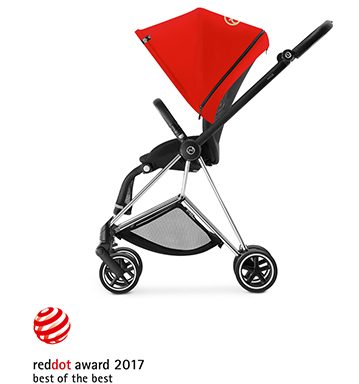Apparel, as one of the basic necessities, has deep impacts on our lives. In 2017 Tmall Double 11 Festival, more than 50 fashion brands achieved hundreds of millions of sales, while in total there are 119 brands across all industries reached that sales, which reflects the enormous volume of fashion industry. With the raising consumption, shorter product cycles, and more channels of interaction with consumers, fashion industry has taken the lead in rapid evolution from physical store sales to online e-commerce sales, to omni-channels and new retail. Let’s see how oTMS helps customers be at forefront of the industry and continue the business growth!
Industry Insight
1. The channels and ways in which brands and consumers interact increase; the online and offline convergence intensifies; and the stocks tend to be shared.
Traditional product path of Brands – (Agents) – Stores – Offline Customers and Online Orders – E-Commerce warehouse – Online Consumers are broken up. New, diverse order fulfillment paths appear. For example, more online orders are delivered from stores, or consumers pick up by themselves from the stores, and the goods of offline orders are delivered to consumers’ house by express. These help fashion brands to understand and manage the inventory as one whole, so they can achieve more sales and help consumers to get better and better shopping experience. The omni-channel logistics capabilities of enterprises are profoundly affecting the consumer repurchase.
2. Inventory of each SKU becomes smaller, leading to a more diversified goods flow and more complex document record types.
Shoes and apparel supply chain is complex, there are not only delivery orders, but also stock transfer between the warehouses, between stores, reverse logistics from store to warehouse, from customer to warehouse and from customer to store. The corresponding upstream systems that generate these documents often differ. Usually, the logistics department should at least face the different formats and different information orders from the warehouse WMS, store POS, e-commerce OMS, etc. They also need to allocate to different carriers timely and reasonably, and then effectively supervise and manage the perfect delivery of these carriers. Afterwards, they need to ensure that carrier invoices are consistent with the original documents and the actual execution, which is extremely difficult to handle manually.
3. Huge amount of shipments, non-standard store operations
The number of replenishment orders, transfer orders and return orders is extremely huge and the stores are geographically dispersed. Rapid staff turnover, who may not always be well trained, leads to unstandardized delivery packaging, lack of reliable weight, non-standard labels, fragmented shipping records. All above make management of transition, exceptions, PODs, lead time and even carrier billings difficult and obscure.
4. More urgent requirement on lead time
“Time is sales” is a true portrayal of apparel industry, with the rising trend of new retail, omni-channel concept, the logistics lead time requirements of fashion enterprises will be further strengthened. Shorten the transit time of inventory means to increase the effective sales time. Acquiring a tool that effectively monitors, manages and optimizes transit time is an extremely pressing need for many fashion industry logisticians.
5. Large gap between traditional 3PL and express
In the field of 2C logistics, the courier service has basically achieved process standardization, shipment traceability & full digitization. However, during the same period, the large traditional three-party logistics still follow old methods of traditional excel, e-mail, telephone, WeChat and even fax, which open up a huge gap in terms of efficiency, cost and accuracy. The time has come to change it.
6. Consistent pursuit of cost reduction and efficiency increase
As competition intensifies, discounts increase, overall profitability of fashion companies goes down. Logistics costs as another major direct cost under after the cost of raw materials procurement, are given more and more attention by not only the logistics supply chain department, but also by senior management, financial department and procurement department.
oTMS Solution
-
oneTMS
Omni-channel solution.
Cloud-based transport management system to connect brand, OEM, agent, stores, warehouses, carriers and drivers on the same platform to manage your shipments. Accessible via browsers, APPs, WeChat and APIs to other systems. Get you Connected. You can achieve online efficient carrier management, Freight billing and payments management and business intelligent. -
Enterprise express management
Different from personal express management tool, oTMS provides the most advanced and comprehensive enterprise express management solution, that covers order dispatch to express carriers, track & trace information intake, exception pre-alert and management and finally KPI and carrier billing management. Up to averagely 2000 orders processed per min, oTMS express solution is proven as high performance, high concurrency and high stability in real practice, and has been trusted by the largest fashion brands in China
-
Handshake
Paperless pickup solution.
Say goodbye to paper documents. Full digitization! Experiencing green logistics! Save time, eliminate errors and effort! -
Orange
Direct carriers procure and consolidation solution.
Procurement, management and payment through technology platform; By reducing the number of middlemen, transport collaboration, replacing labor with intelligent robots, you can greatly reduce shipping cost, and the same time, strengthen the control of drivers to further ensure the strict implementation of SOPs. -
Dock Appointment
Best practice for fashion warehouse.
Boost your dock efficiency and avoid waiting for both DC staff and drivers.
oTMS Unique Value

1. Customer experience in traditional distribution channels can meet and even exceed B2C ecommerce standards

2. Shipment process optimized, distributed to right party and automated for accurate real time data

3.100% accurate freight billing can be confirmed within a single day

4. Information flow accelerated by order of magnitude

5. Strengthen shipment control and carrier process compliance

6. Shipper collaboration: synchronize transport flows to take the cost, congestion, CO2 emissons out of the system

7. Effective data capture, in-depth data insight

8. SaaS - low investment, high return, permanent free upgrades

9. oneTMS platform approach - industry best practices
Case Study

Li-Ning
oSuper has enabled us to increase our store response time, boost product turnover, and integrate the inventories of each store.
Learn more
DAZZLE FASHION
With the rapid development of company, DAZZLE FASHION has begun to fully optimize its omni-channel management system.
Learn more
Good Baby
Intelligent, innovative, and user-friendly designs to easily manage all of our logistics needs.
Learn more





